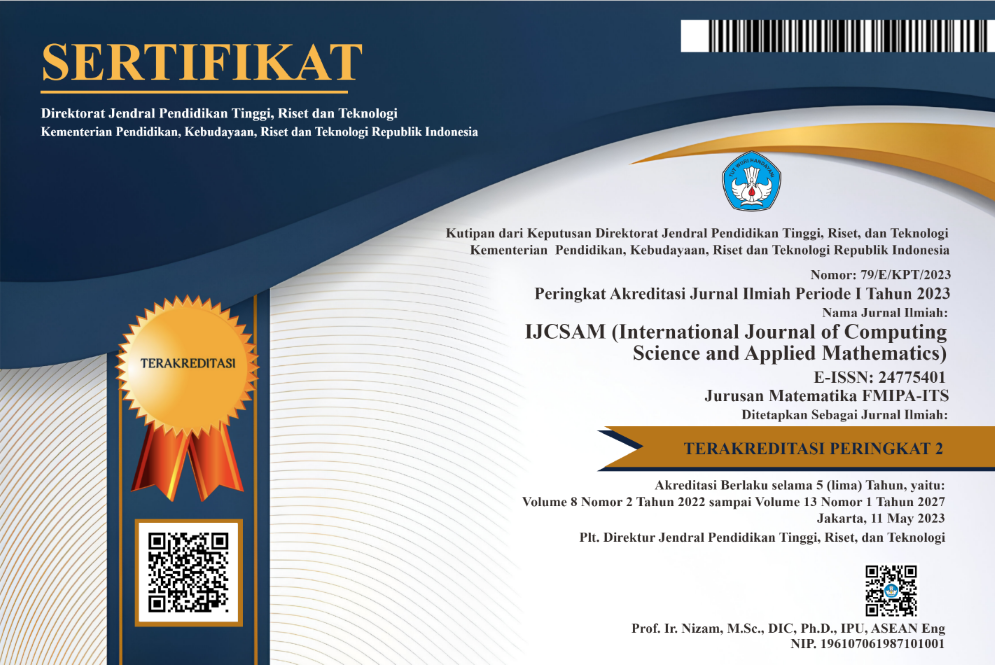Comparison of Numerical Methods on Pricing of European Put Options
Abstract
Keywords
Full Text:
PDFReferences
F. Black and M. Scholes, “The Pricing of Options and Corporate Liabilities,” Journal of Political Economy, vol. 81, no. 3, pp. 637–654, 1973.
H. Zhang, F. Liu, I. Turner, and Q. Yang, “Numerical solution of the time fractional black–scholes model governing european options,” Computers & Mathematics with Applications, vol. 71, no. 9, pp. 1772–1783, 2016.
J. C. Cox, S. A. Ross, and M. Rubinstein, “Option pricing: A simplified approach,” Journal of financial Economics, vol. 7, no. 3, pp. 229–263, 1979.
P. Wilmott, S. Howison, and J. Dewynne, The Mathematics of Financial Derivatives: A Student Introduction, first edition ed. Cambridge University Press,, 1995.
D. G. Duffy, Transform Methods for Solving Partial Differential Equations, 2nd ed. Chapman and Hall/CRC, 2004.
A. Lateef and C. Verma, “An analysis of fractional explicit method over black scholes method for pricing option,” Global Journal of Pure and Applied Mathematics, vol. 13, no. 9, pp. 5851–5869, 2017.
J. C. Hull, Options, Futures, and Other Derivatives, 7th ed. Pearson Prentice Hall, 2009.
DOI: http://dx.doi.org/10.12962%2Fj24775401.v5i1.3172
Refbacks
- There are currently no refbacks.
View My Stats

International Journal of Computing Science and Applied Mathematics by Pusat Publikasi Ilmiah LPPM, Institut Teknologi Sepuluh Nopember is licensed under a Creative Commons Attribution-ShareAlike 4.0 International License.
Based on a work at https://iptek.its.ac.id/index.php/ijcsam.






